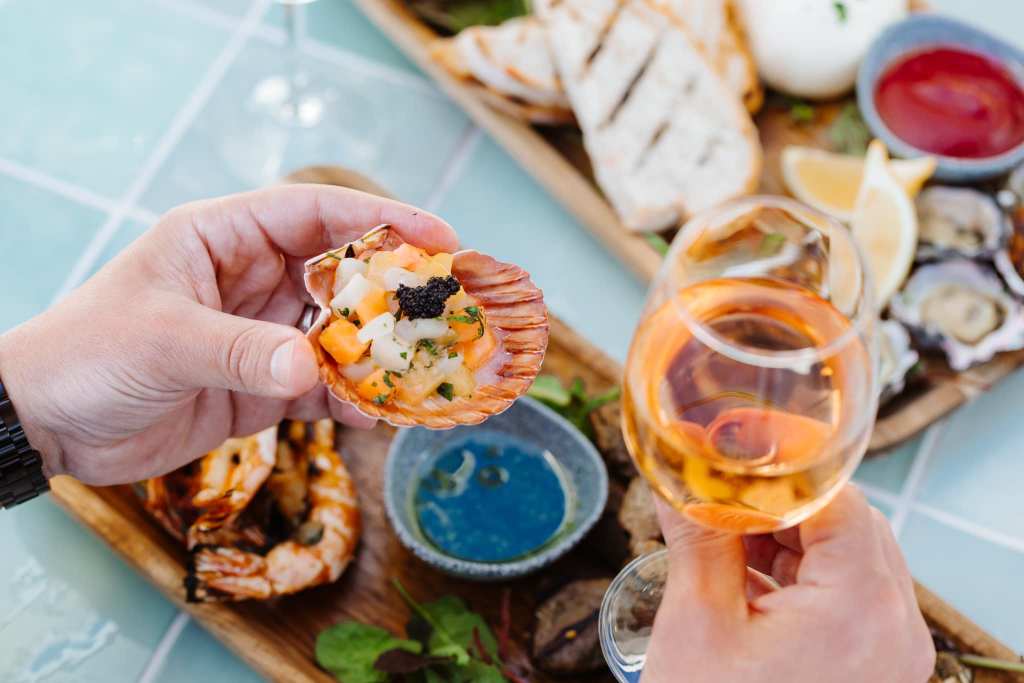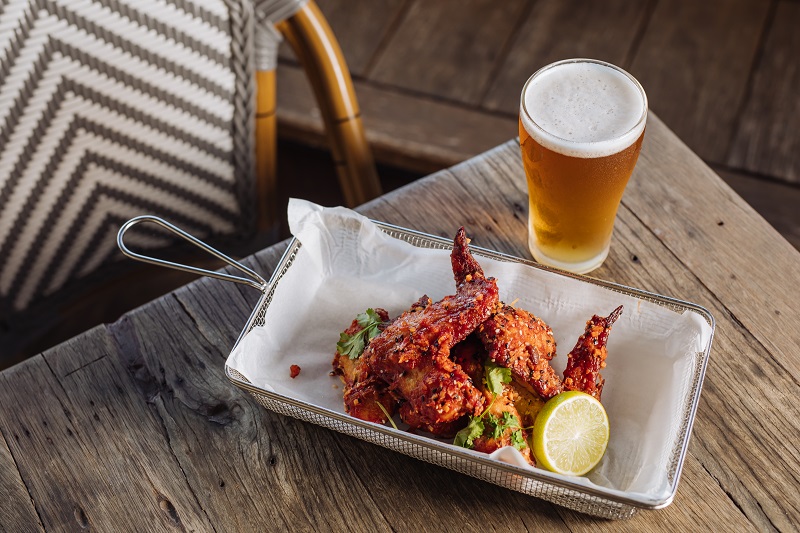In the past, bar food offerings were often limited to salty nuts and packets of chips. For clubs, the attention was focused instead on getting patrons to purchase more drinks.
“A bar snack from yesteryear was to encourage drinking,” according to chef consultant Paul Rifkin.
“The salty nuts and other assorted freebies would make the customer thirsty, hence they would purchase more drinks.”
However, this has changed dramatically. There are now as many food and drink options at the bar as there are at the club bistro or cafe. Rifkin pointed out that hygiene and a decline in excessive drinking behaviours have been responsible for this shift.
“Today, there is an expectation that more variety is available, although the salty chips and nuts are still sold at most bars,” he said.
Catering HQ founder Steve Sidd agreed that bar food menus have diversified significantly. Catering HQ is the hospitality partner of several NSW clubs including Cronulla RSL, Club Parramatta, Castle Hill RSL, and Pittwater RSL.
“We still offer deep-fried items because it’s just the food that people want, but we’ve introduced things like spicy chicken wings, baos with pulled pork and slow-cooked beef, as well as steamed dumplings and dim sums,” he said.
Sidd emphasised the importance of designing a bar menu that’s easy to eat. “It can’t be anything too big that people can’t pick up with their hands and it can’t be too messy or dirty, especially because in clubs if a patron is going into the gaming room with food, we don’t want dirty greasy fingers touching machines.”

He added bar food options don’t necessarily have to be unhealthy either. “Some of our clubs are connected to swimming pools and gyms, and so quite often we get a lot of people who are actually health conscious coming in, especially in the afternoons, and they want healthy options such as protein balls, which we make in-house, and we sell them as snack items.”
For Elyssa Haley from Birch &Waite Foods, she’s increasingly seeing Asian flavours infiltrate bar menus.
“At Birch & Waite, we’ve noticed Japanese and modern Asian are common cuisines that feature heavily in the casual dining scene,” she said.
“Our new Miso and Roasted Sesame Dressing has premiumised the popular, creamy, and nutty dressing with a new authentic, multi-dimensional dressing featuring miso, tamari and rice vinegar to round out the dressing’s rich umami quality.
“With freshly roasted deep flavours, this dressing is perfect drizzled on soba noodle salad, poke bowls, or grilled meats. Its rich umami flavour will also enhance any roast vegetable or fish dishes.”
Filling the gaps
Offering a wider variety of food at the bar has meant clubs can cater to those seeking a feed in between typical lunch or dinner services.
“The 2.30pm to 5.30pm gap doesn’t cater for the tradies and morning shift workers, who often arrive in this time slot. With a similar situation occurring later when the late shift workers pop in for a drink,” Rifkin said.
“This presents a great opportunity for those clubs to create an offering that fills these gaps.”
Currumbin RSL is one club that has capitalised on this opportunity and has developed a bar menu that boasts “delicious food all day”. There are plenty of substantial food items including a crowd-favourite sticky chilli koji chicken wings with fermented chilli and crispy onions, loaded pulled brisket nachos, as well as snackable popcorn cauliflower and salt and pepper calamari.

Patrons can also order pizza from the club’s La Bocca pizza restaurant.
“We’re trying to uphold that no matter what time of day you come here, you’ll have a good meal,” Currumbin RSL marketing manager Marc Thompson said.
“People’s standards for food and quality of staff have increased, especially these days where people are more cautious about how they spend disposable incomes. If you’re going somewhere, you want to ensure you’re getting the best value quality.”
Sidd concurred, noting the rising cost of living means clubs need to create an exceptional bar dining experience to attract patrons.
“I always used this analogy with my team where if I’ve got my last $50 to spend, am I going to go to a restaurant where I get served by a waiter … or am I going to go to a club where I have to go up to order my food and drink. Of course, I know where I’m going – I’m going to a restaurant because I want to be served on,” Sidd said
“So, what I say to my staff is we need to provide the best food and the best service at a really good price, so those customers choose our venues over a restaurant.
“When they come to us if that customer is going to spend their last $50, we need to make sure that we give them the best possible experience because if we give them a mediocre experience and underperform, they’re going think that was the worst experience and they’ve just wasted their last $50.”
He added that growing competition has increased pressure on clubs to deliver quality bar food.
“Clubs have changed in a big way; clubs are now competing with the local cafe, the local restaurant, and health bars,” Sidd said.
“We’ve got a lot of competition, so clubs have to up the ante to really have a point of difference so that people know they can come to a club and not get the typical experience they’ve seen in the past.”
This is an excerpt from Club Management Winter. Read the article in full below.
